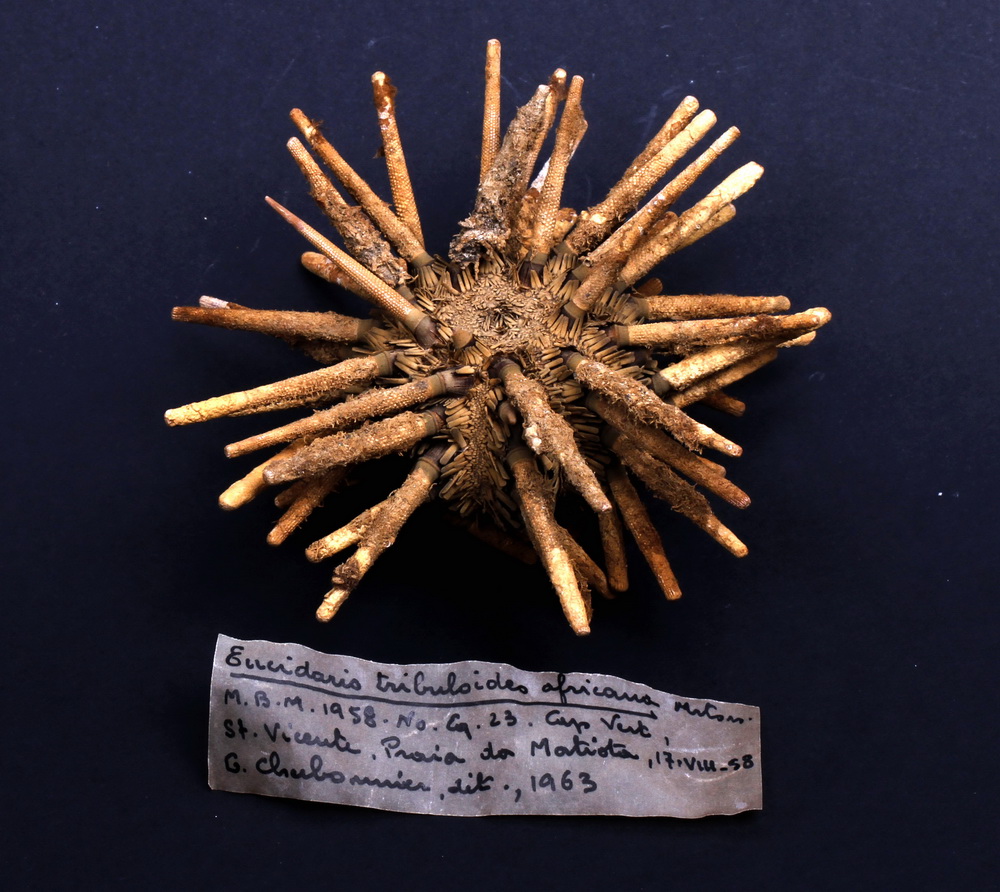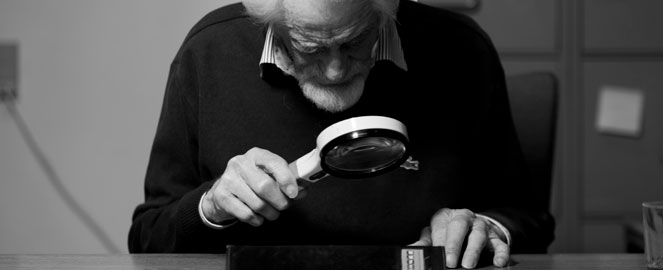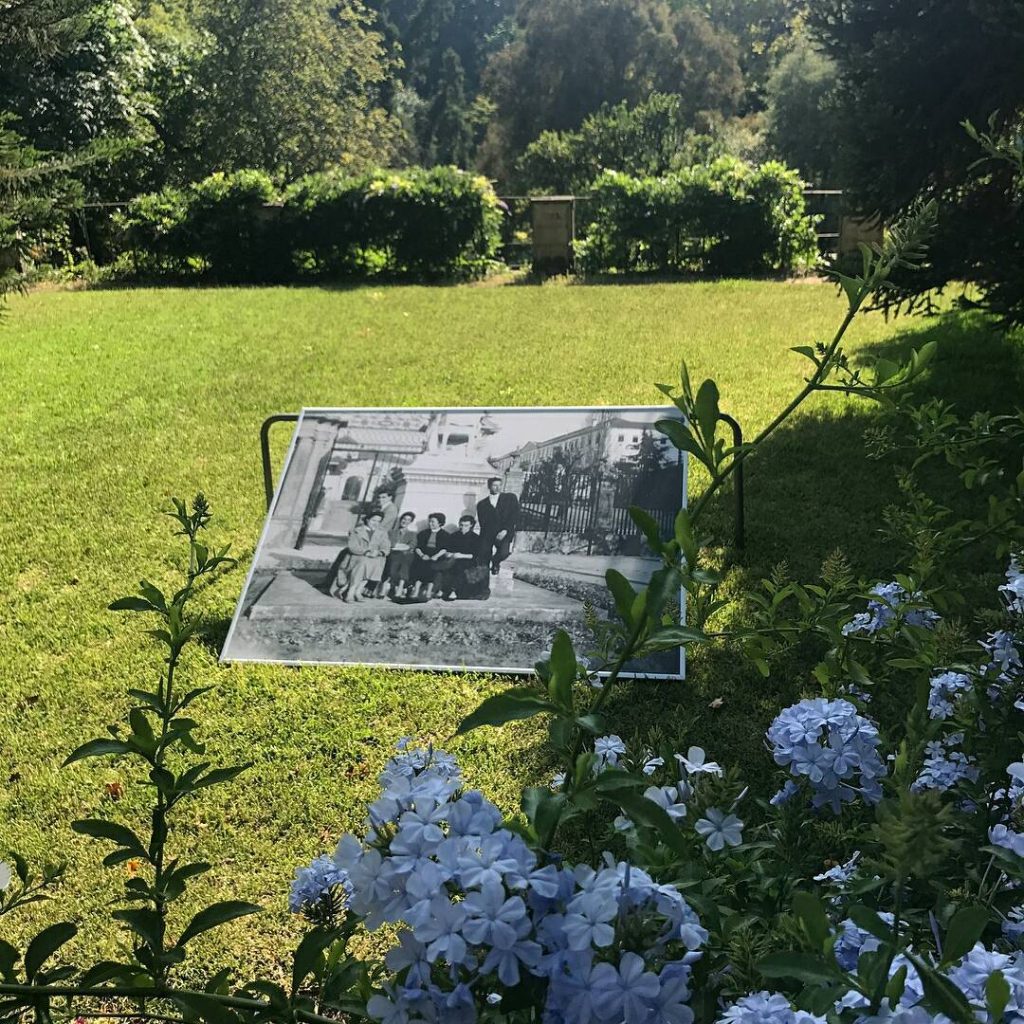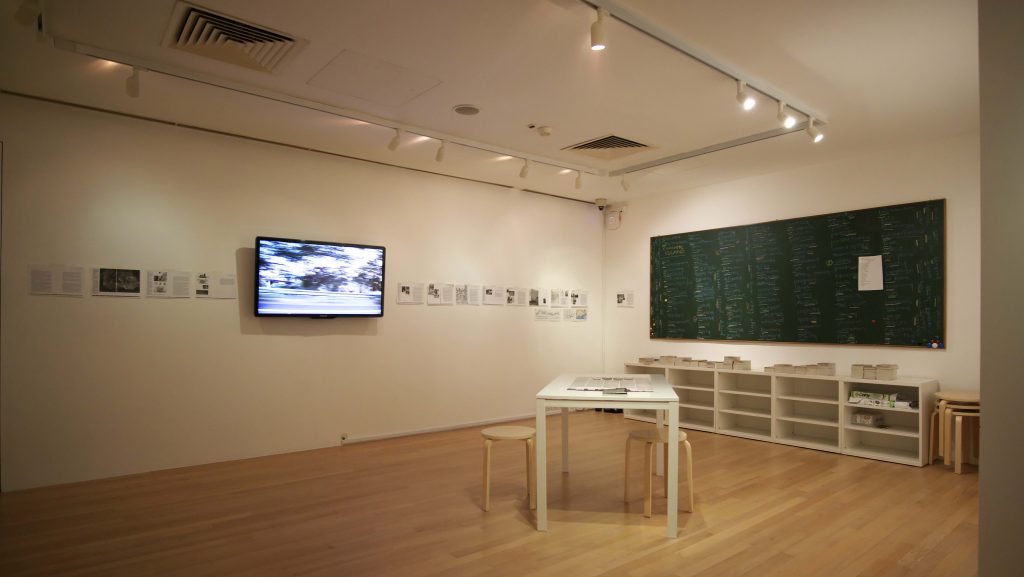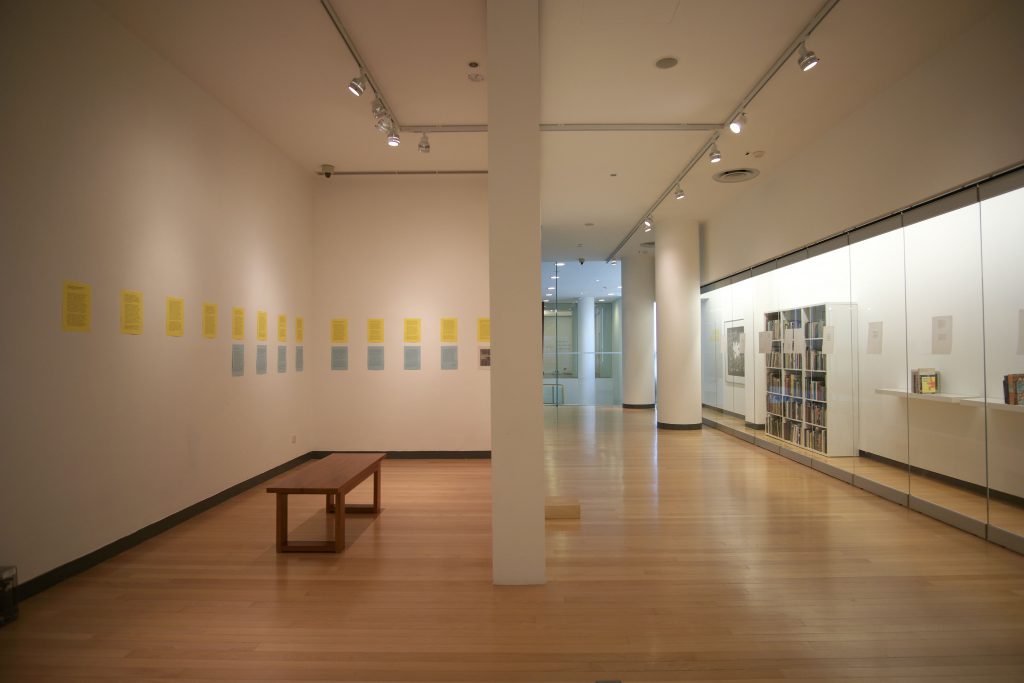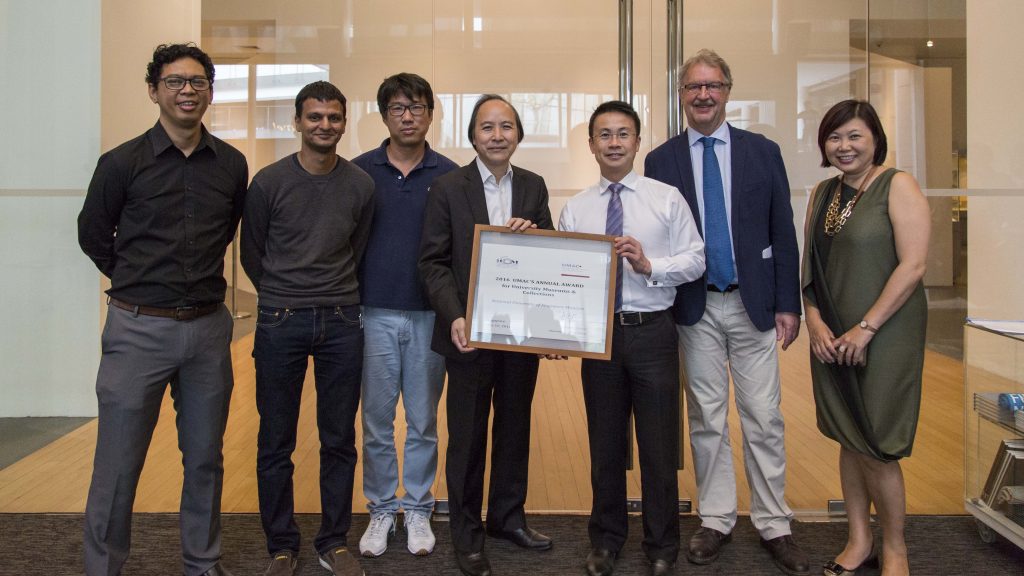UMAC AWARD 2021
The winner of the UMAC Award 2021 was announced 3 September 2021, during the UMAC annual conference. It’s Aarhus University (Denmark), with Harvard University (USA) and Tel Aviv University (Israel) in second place.
Aarhus University, Denmark
Science Museums
Exhibition ‘Profession and Passion: A Life in Science’
Research is invisible and often outcome-focused. The exhibition “Profession and passion. A Life in Science” at the Steno Museum, Science Museums of Aarhus University, explores four core themes for the research community: curiosity, experiments, collaboration and the quest for recognition. After working closely with five male and three female scientists, the museum shows their authentic workstations, routines and reflections on life as a university researcher. One key object is the entire office of Nobel laureate Jens Christian Skou, complete with 40 years of experimental results kept in 400 ring binders. Guests are invited to engage by sharing personal experiences of recognition and opinions on dilemmas involving society and science.
Profession and Passion website
Science Museerne website
UMAC AWARD 2021 — SECOND PLACE
Tel Aviv University, ISRAEL
The Genia Schreiber Art Gallery
Exhibition ‘Plan(e)t: Plants Think, Think Plants’
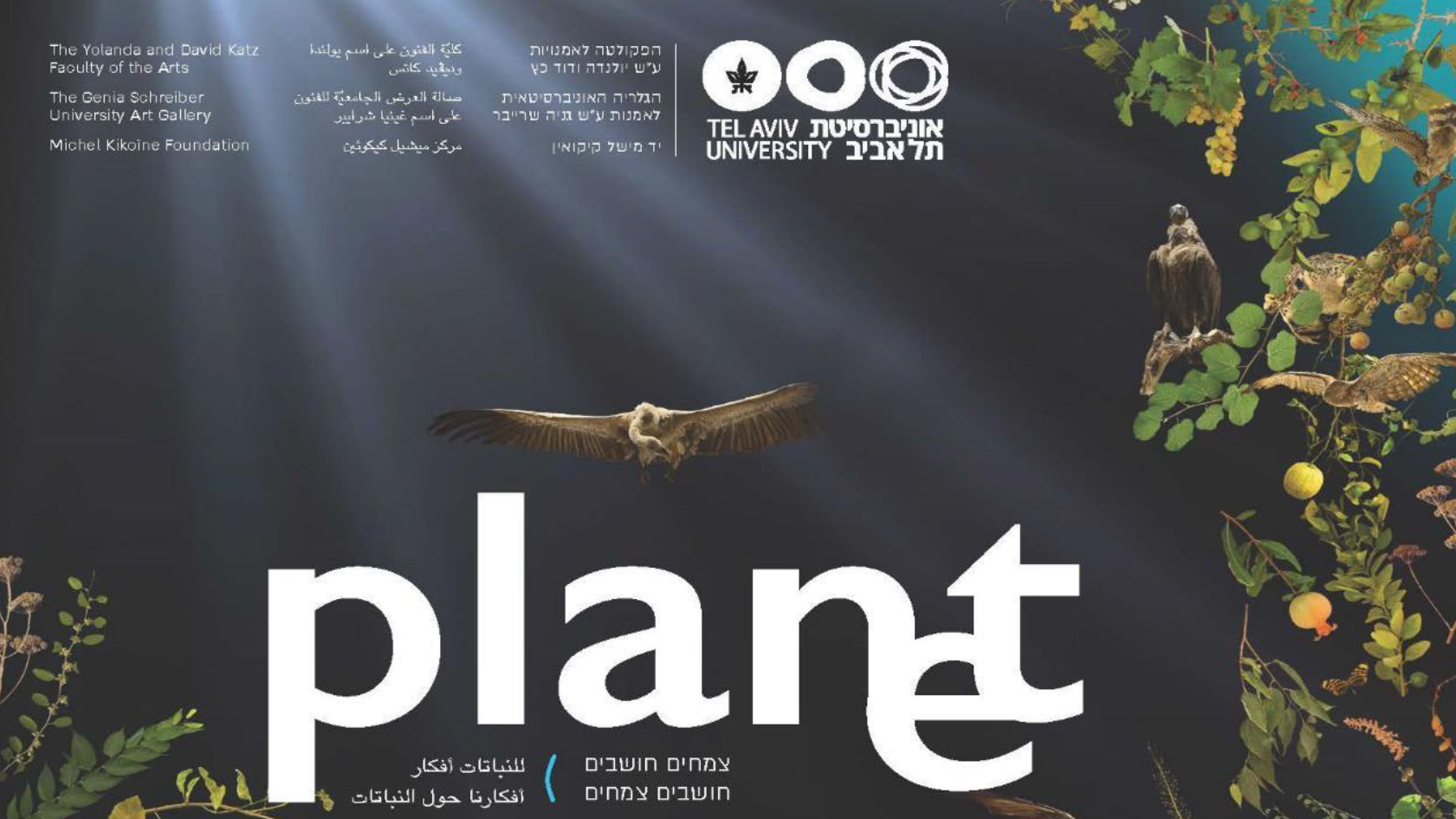
The exhibition “Plan(e)t”, curated by Dr. Tamar Mayer and Dr. Sefy Hendler and currently on display at the University Art Gallery, Tel Aviv University, places planets and their environment at the center of combined artistic, scientific and public endeavors. Its subtitle, “Plants Think, Think Plants,” marks its underlying logic: Plants are “intelligent” beings, and therefore we must think of them in complex ways. The exhibit promotes the idea that sustainable thinking must include a reevaluation of the hierarchy that places plants on a lower rung than living beings, and humans in particular. It combines the excellence of TAU scientists with leading international and local artists, advocating for a more thoughtful, ecological stance towards the planet we live on.
The Genia Schreiber Art Gallery website
See their presentation for the UMAC Award, 23 August 2021:
UMAC AWARD 2021 — SECOND PLACE
Harvard University, USA
Harvard Art Museums
The Pandemic Pivot
After the COVID-19 pandemic forced the temporary closure of the Harvard Art Museums, the Division of Academic and Public Programs (DAPP) team initiated The Pandemic Pivot project. This enabled the museum to rapidly reimagine its teaching and programming for university and public audiences.

DAPP created and implemented a digital engagement strategy in collaboration with colleagues and students to pivot from in-person to remote teaching and learning. Innovative virtual content was created in line with the university’s standards of excellence, and DAPP continues to experiment, implement, and evaluate ways to meaningfully engage the Harvard Art Museums’ public and academic audiences.
Remote Teaching Resources
Harvard Art Museums Remote Resources for Teaching (list of remote resources available to instructors)
LatinX Experience in the Collections
African American History in the Collections
Sample Remote Programs
Sample programs including the Power Dynamics series, Creature Features, Art Talks, and the Painting Edo at the Arnold Arboretum programs are available to the public on our Vimeo channel:
https://vimeo.com/showcase/7568019
https://vimeo.com/channels/1667087
https://vimeo.com/channels/1659879
https://vimeo.com/channels/1557966
Materials Lab Make Art Prompts
https://harvardartmuseums.org/tour/
Student Programs
Student programs are public programs created by Harvard undergraduate student staff members under the supervision of the Division of Academic and Public Programs.
Student Guide Cecilia’s Madame Pompadour makeup tutorial video (shown on Instagram).
Art Breaks
A series of “Art Breaks” was held for physicians and medical staff and researchers at (mostly) Harvard-affiliated hospitals as part of this project, in order to support medical colleagues who were working under adverse conditions during the pandemic. The linked articles gives a sense of the work this series accomplishes.
Harvard Art Museums uses works from its collections to help doctors decompress
See their presentation for the UMAC Award, 25 August 2021:
UMAC AWARD 2020
The winner of the UMAC Award 2020 was announced during a ceremony in UMAC youtube channel, 28 September 2020:
University of Tartu Museum, ESTONIA
A Hundred Faces of the University of Tartu

The project ‘A Hundred Faces of the University of Tartu’ aimed to portray the University of Tartu through current scholars and historical objects. In the course of the project, a photo exhibition called ‘Get Your Spirit Ready! A Hundred Faces of the University of Tartu’ was presented, and the book A Hundred Faces of the University of Tartu was published, with 100 objects from the University of Tartu collections, each enabling the scholars to describe their fields of activity.
The exhibition traveled to the University’s various buildings in Estonia, thereby introducing colleagues to each other, and the University’s outstanding scholars to students. Presently, the exhibition is presented as a section of a larger exhibition called The University of Our Lives at the University of Tartu Museum.
The University of Tartu Museum website
Virtual exhibition (in Estonian but with all Birgit Püve’s portraits)
UMAC AWARD 2020 in the press:
UMAC Award 2020 in higher education networks:
GUNi: Global University Network for Innovation : University of Tartu Museum Wins the UMAC Award 2020
UMAC AWARD 2020 – SECOND PLACE
Fitzwilliam Museum, University of Cambridge UK
The Egyptian Coffins Project
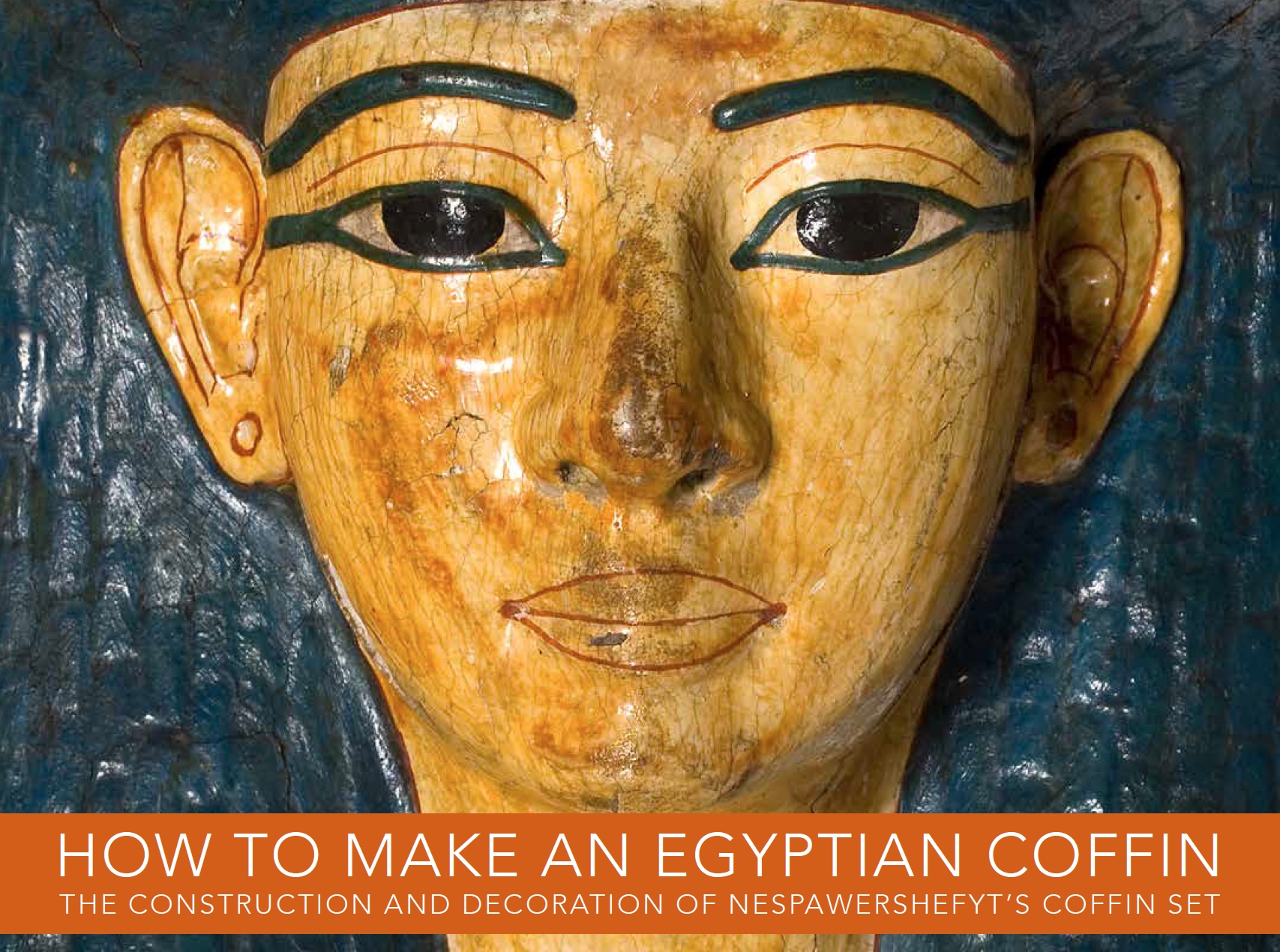
The Egyptian Coffins Project undertakes cutting-edge interdisciplinary research into ancient Egyptian coffins, revealing how they were made and decorated. This was first disseminated via a major exhibition and publication in 2016. Since then the Fitzwilliam Museum has reached out to people in culturally underserved communities in England and Egypt, through a ‘Pop-Up’ Museum, with researchers ‘appearing’ in surprising locations, e.g. a pub, shopping centre and food bank, with authentic museum objects, activities and experiences. The online resource includes short films and a 3D animation with Arabic subtitles. The Fitzwilliam Museum also runs workshops sharing research methodologies with curators and conservators in the UK and in Egypt.
The Fitzwilliam Museum website
Official project presentation, 7 September 2020, with Steph Scholten:
UMAC AWARD 2020 – SECOND PLACE
Manchester Museum, University of Manchester, UK
Return of Cultural Heritage Project: Manchester Museum Repatriation
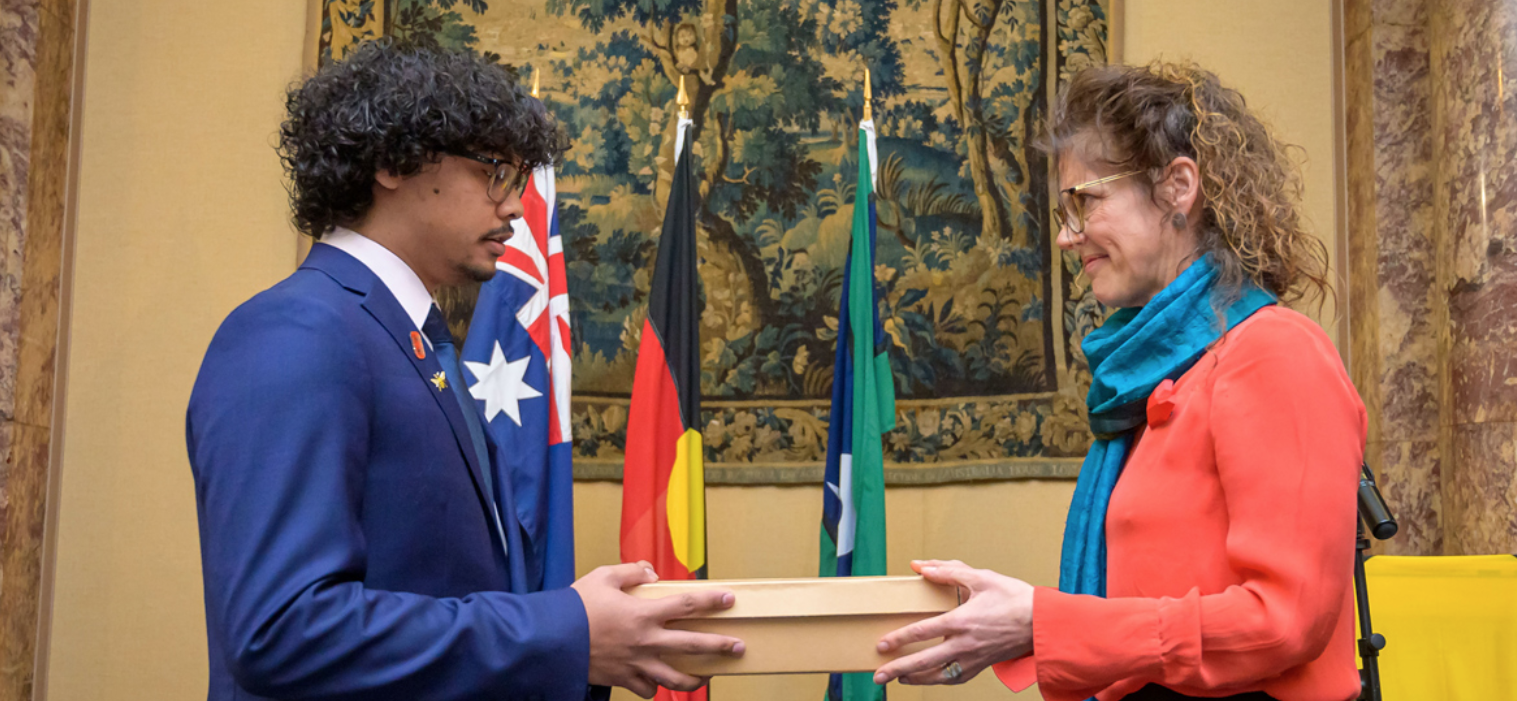
Following extensive partnership work with the Australian Institute of Aboriginal and Torres Strait Islander Studies (AIATSIS), Manchester Museum announced on the 4th October 2019 that it would unconditionally return 43 secret sacred and ceremonial items from its collection to four Aboriginal communities. It became the first university museum to do so and established a new precedent for repatriation amidst heightened international debate around museum decolonisation. This repatriation in turn contributes to the wider ambition of the AIATSIS Return of Cultural Heritage project: the return of items of Indigenous cultural heritage to Australia for the purpose of cultural revitalisation.
Read more here
The Manchester Museum website
Official project presentation, 14 September 2020, with Akiko Fukuno:
UMAC Award 2019
The winner of the UMAC Award 2019 was announced during the 19th UMAC Annual General Assembly, 3 September 2019, in Kyoto:
Medical Museion, University of Copenhagen, Denmark
Mind the Gut Project (2017-2018)
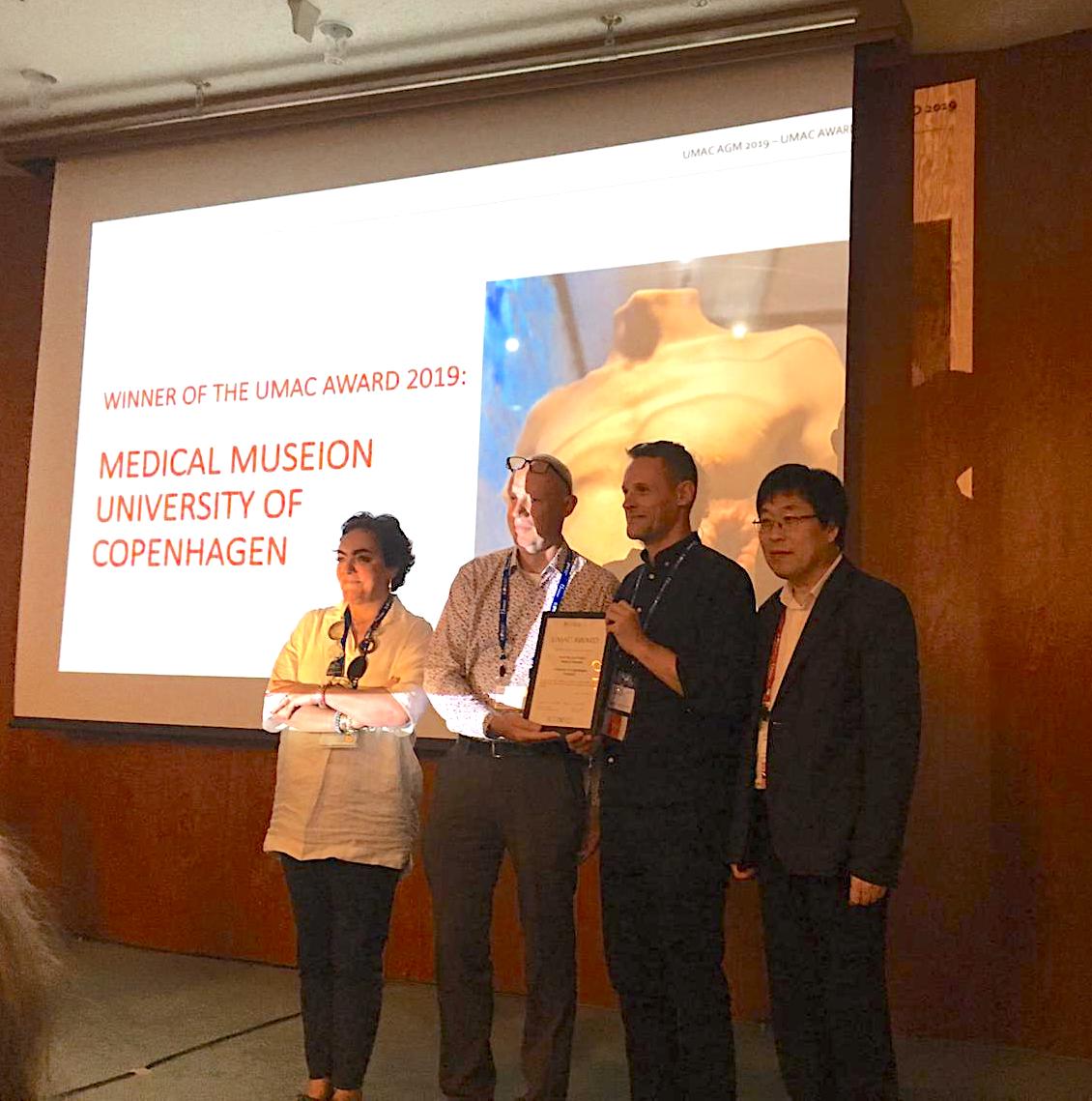
The Mind the Gut project is a combined exhibition, curatorial experiment, acquisition program, public events, and platform for public research and teaching at Medical Museion in Copenhagen.
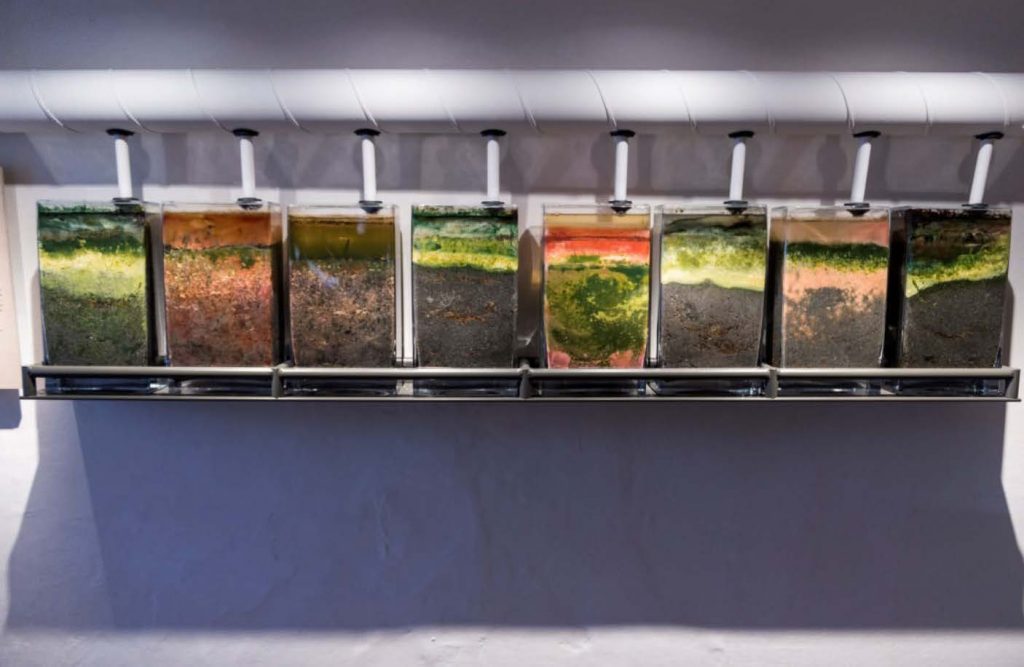
It examines the relationship between brain, bowels, and the trillions of microbes that inhabit them, and asks how the relationship between feelings and digestion has been understood over time. The exhibition brings together artworks, historical artefacts from the collections, new items from contemporary laboratories, and personal stories. These components were put together by an interdisciplinary team of curators, scientists, and artists over two years, addressing contemporary trends in co-curation.
Mind the Gut more images and in the Danish Press
Mind the Gut video ‘The Swallow and the Squeeze’
See also the paper: Adam Bencard & Louise Emma Whiteley (2018), Mind the Gut—displaying microbiome research through artistic collaboration, Microbial Ecology in Health and Disease, 29: 2.
In the words of the UMAC 2019 Award Committee:
“‘Mind the gut’ is an innovative way of working co-curation in the design of an exhibition with great impact. The display emphasizes exploration over explanation. It does not aim to give answers but encourage visitors to ask themselves their own questions. It is an inspiration for many university museum exhibitions, and not only about medicine.”
“Extraordinarily original approach to a research topic of broad cultural and social interest.”
UMAC AWARD 2019 — SECOND PLACE
Art Museum, University of Toronto, Canada
Figures of Sleep and the Night of Ideas (2018)
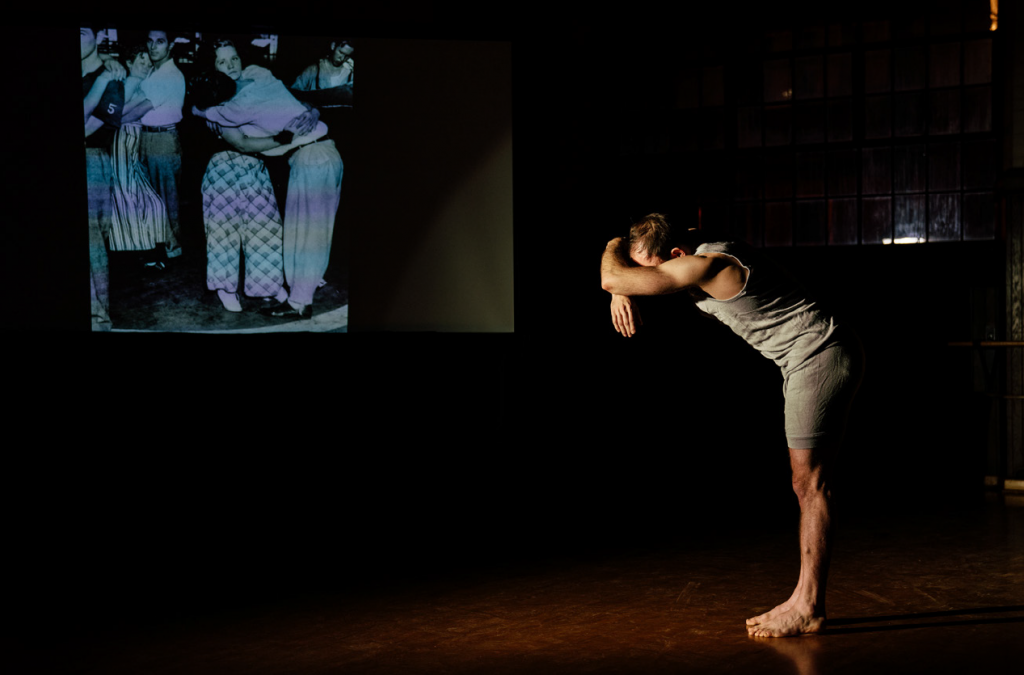
Figures of Sleep was a major international art exhibition at the Art Museum, University of Toronto, paired with Night of Ideas, an intensive all-night forum of screenings, performances and public debates on the question Is sleep in crisis? The conjoined event brought artists’ existential and political concerns with sleep into dynamic dialogue with the latest scientific and humanities research into the meaning of downtime, the health impact of sleeplessness, the cultural importance of dreaming, and the architecture of the bedroom. Welcoming over 7,000 visitors, the project explored a timely subject through cross-disciplinary perspectives, shaping a new model of social engagement for a university gallery.
Night of Ideas promo
Night of Ideas more images
In the words of the UMAC 2019 Award Committee:
“Fantastic! An innovative approach to programming that is transferable for any museum-specific concept, specific programs, and scale for programming.”
“Original and very rich. This project really makes you want to spend a night at the museum!”
UMAC AWARD 2019 — SECOND PLACE
Shanghai University (SHU)-Nagasaki International University (NIU), China-Japan
SHU-NIU Short-term Museology Internship Program (2018, ongoing)
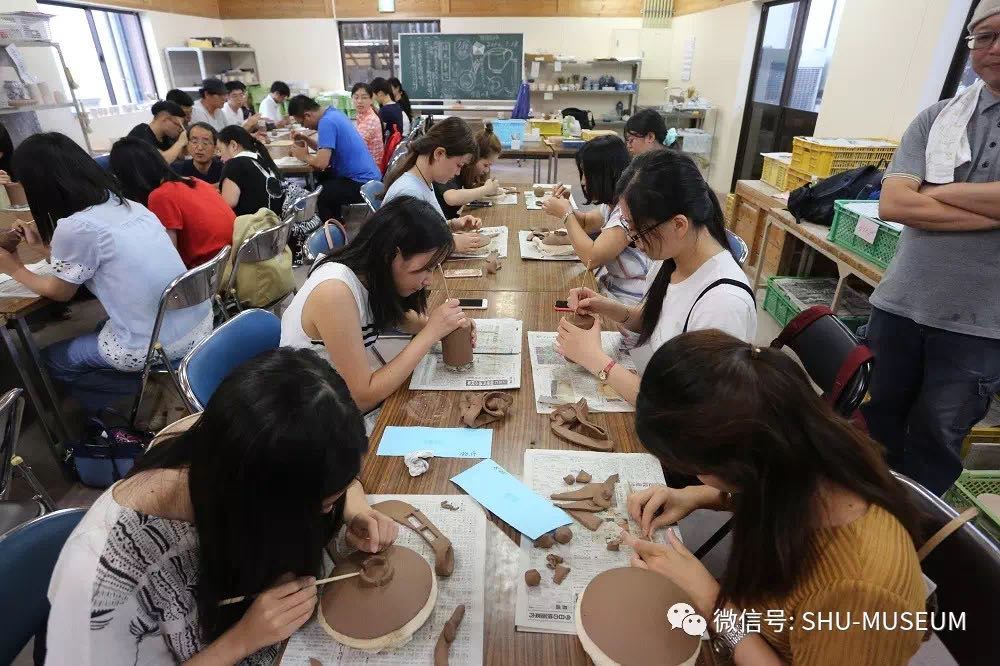
Submitted to the UMAC Award 2019 by the Shanghai University Museum, the SHU-NIU Short-term Museology Internship Exchange Program is an international training program for graduate and undergraduate students, as well as museum curators. The program started in 2016, when SHU sent 16 students and two faculty to NIU for a systematic learning program about museology, including lectures, operation and field visits of national museums. Since the 2nd year, NIU started sending students and faculty members to SHU too, for museum study visits and Chinese culture lessons. The program has continued for 3 years and have made a significant impact on the students involved.
SHU-NIU program comments from students
SHU-NIU program more photos
In the words of the UMAC 2019 Award Committee:
“An excellent international program focused on cultural exchange.”
“A well-structured, diverse and rich training program that touches both local cultures and a more global culture resonating with all of us.”
UMAC AWARD 2018 — WINNER
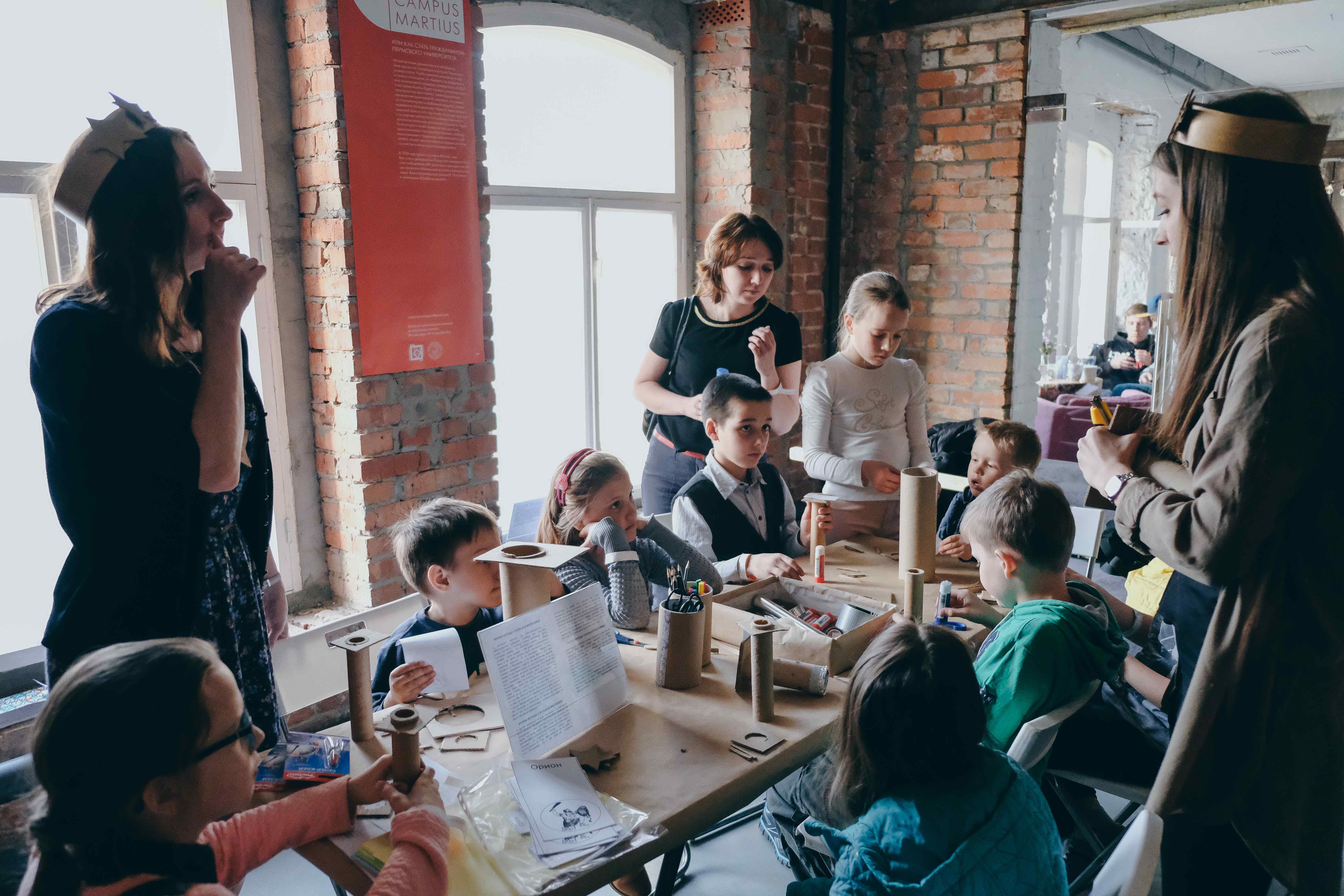
The winner of the UMAC AWARD 2018 is the project CAMPUS MARTIUS, or how to become a citizen of Perm University, from the Perm University History Museum, Russia.
Campus Martius is aimed at drawing attention to the historic collections of Perm University. A multi-format Forum was created at the University in front of the Museum, to hold events, involve university students, professors and graduates. At the Forum discussions about the consciousness and participation in campus life on basis of antique collections are taking place. Another activity is discussions outside the campus at international festivals, in public actions and lectures. The community is now much more involved in the museum and other post effects are related to the collections, the University and the education itself.
In the words of the 2018 UMAC Award Evaluation Committee: “Creating a forum for open discourse is a vital role for museums in higher education, equally important in engaging the community. The case of Campus Martius, with its collections-based public lectures, walks and excursions throughout the city, manages to engage students, professors, staff and also common citizens from Perm. It is an especially interesting case because it provides an innovative solution for a museum with limited space, limited resources and no visibility. Perm University History Museum has doubled its visitors and is now part of the cultural map of the city.”
Learn more about Perm University Museums
Learn more about Perm State University
UMAC AWARD 2018 – SECOND PLACE
Outdoor Photo Exhibition: Plant-Insect Interactions
Université Libre de Bruxelles, Belgium
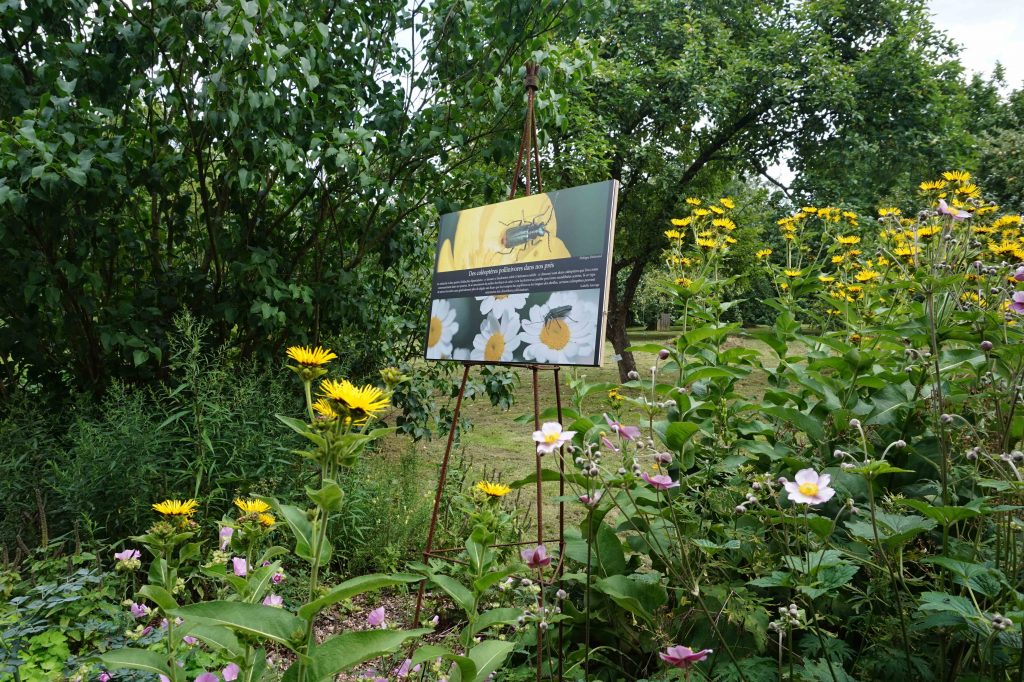
The essence of this project is an outdoor exhibition of 109 colour photographs illustrating relations between insects and plants in the Jardin botanique Jean Massart. All photographs were taken by amateur photographers, regular visitors of the garden. The theme was “plant-insect interactions”. Why? Research has recently shown that the Jardin botanique Jean Massart is a hotspot of insect biodiversity, hosting 2,000 species of insects. An ode to biodiversity in the capital of Europe! The original project combines science with a rich and surprising approach.
UMAC AWARD 2018 – SECOND PLACE
Photosynthesis/The Garden by Our Visitors
University of Coimbra, Portugal
Photo courtesy UC.
The Botanic Garden of the University of Coimbra is a privileged setting for the photographic memories of those who visit the garden. Thousands of visitors took photos among the plants, capturing different periods of the Garden. After an open call, where people could share their photos and stories of the Garden, an open-air exhibition was created. And a personal archive of the Garden was compiled that continues to grow online. The project involves the citizens of the area and helps the research about the past of this botanical garden. The idea of the project is community engagement with the University.
The nomination in local media:
UMAC Award 2017
UMAC Award 2017 — WINNER
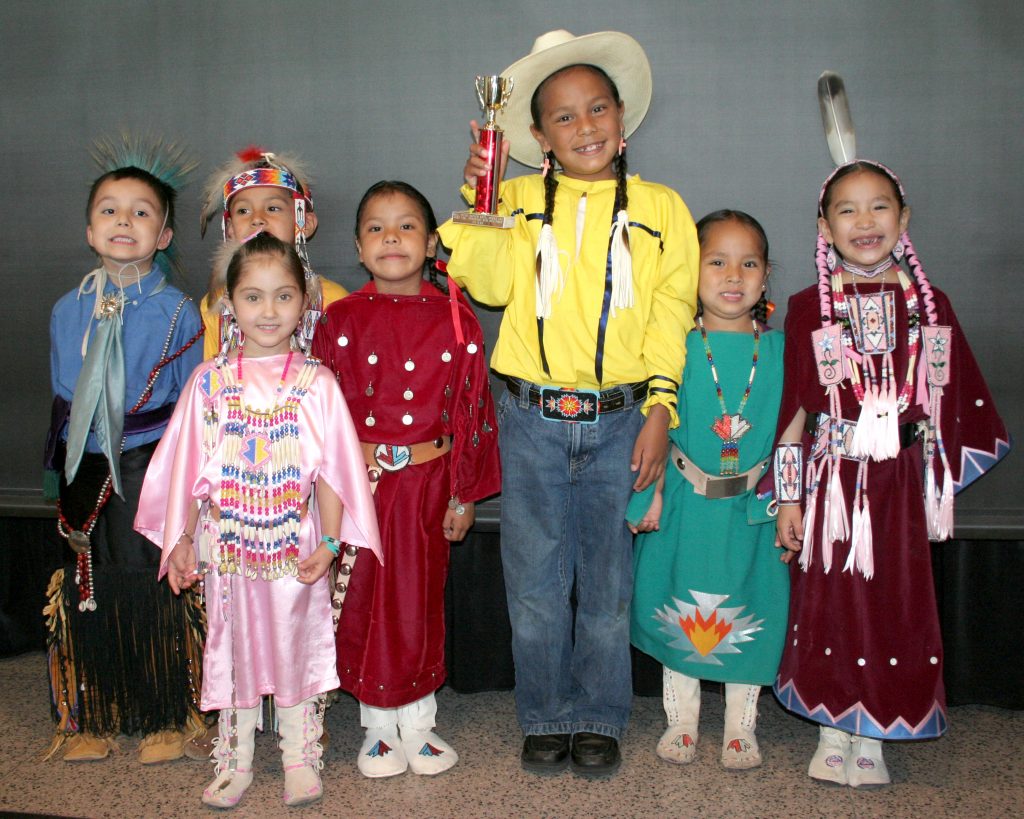
First Place: 3rd Ð 5th Group Language with Music and Dance
Anadarko Youth Two Steppers
Oklahoma Native American Youth Language Fair (ONAYLF)
Sam Noble Museum of Natural History, University of Oklahoma
Every spring, hundreds of students, teachers and community members gather at the Sam Noble Museum, University of Oklahoma, for the Oklahoma Native American Youth Language Fair (ONAYLF). The Fair celebrates language diversity, with live presentations of song, speech and story and students compete in material submission categories like poster art, films, books cartoons and advocacy essays.
The Fair has encouraged and supported the efforts of Native communities in Oklahoma and the surrounding region to document, revitalize and perpetuate their ancestral languages. The growth of the Fair over 15 years has established the event as a major celebration of indigenous languages.
“The university is proud of the well-earned international recognition received by our natural history museum.”
University of Oklahoma President David L. Boren
“This award, coming as it does after winning the national conservation award, the U.S. National Medal and the European Heritage Award, underscores the quality and diversity of the museum’s programs and the quality of the staff. I think the museum is among the best and most visible departments of the University of Oklahoma.”
Michael Mares, Ph.D.
Learn more about ONAYLF
UMAC AWARD 2017 – SECOND PLACE
Replication of the Curie experiment on radioactivity
University of Rennes
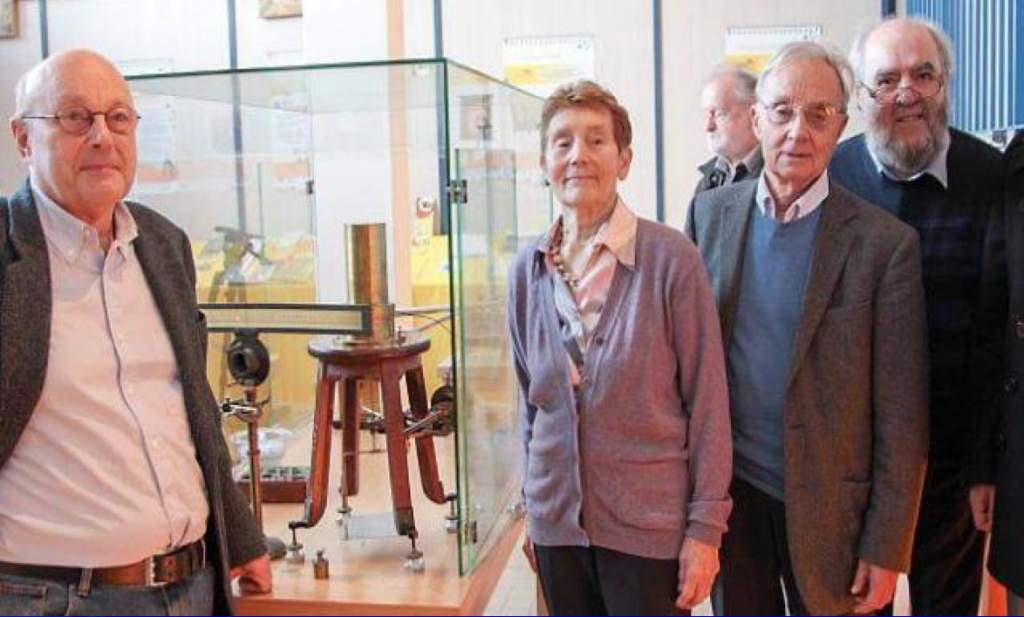
The first quantitative measurement of radioactivity was made in 1898 by Pierre and Marie Curie. They used a prototype experiment based on a quartz balance. These measurements led to the discovery of radium and polonium.
In 2015, Bernard Pigelet and Dominique Bernard achieved the delicate replication of the Curie prototype at the University of Rennes 1. Using an original quartz balance and pieces from historical instruments identified in the collections of the University they could make the experiment fully operational and it is now regularly presented to the public, through a permanent exhibition, online videos and particular events.
In the Media:
Ouest-France, 16 September 2017
UMAC AWARD 2017 – SECOND PLACE
The ‘I C Taiwan Exhibition’
National Cheng Kung University Museum
The NCKU Museum, cooperating with National Technical Museum, the City of Prague Museum and the Mendel Museum of Masaryk University in Czech Republic, presents the exhibition ‘I C Taiwan’ as the largest international exhibition organized by a Taiwanese university. The exhibition features a matrix of interdependent themes about Taiwan; the melding of religious cultures, the innovation of traditional techniques in cope with preserving historical and cultural heritages. The Czech museums hosted the exhibition from July 2015 until January 2016.
The exhibition became an example of a new model of cultural diplomacy, which has already introduced new opportunities for international academic exchanges and university networking.
UMAC AWARD 2017 – EVALUATION COMMITTEE
Barbara Rothermel, Vice-Chair UMAC, USA
Graciela Weisinger Cordero, Vice-Chair UMAC, Argentina
Laishun An, Vice-President of ICOM, China
Pierre de Maret, Université Libre de Bruxelles, Belgium
Terry Simioti Nyambe, ICOM Executive Council Member, Zambia
Chair (non-voting): Ing-Marie Munktell, Sweden
UMAC Award 2016
WINNER: THE PREP-ROOM
NUS Museum, National University of Singapore
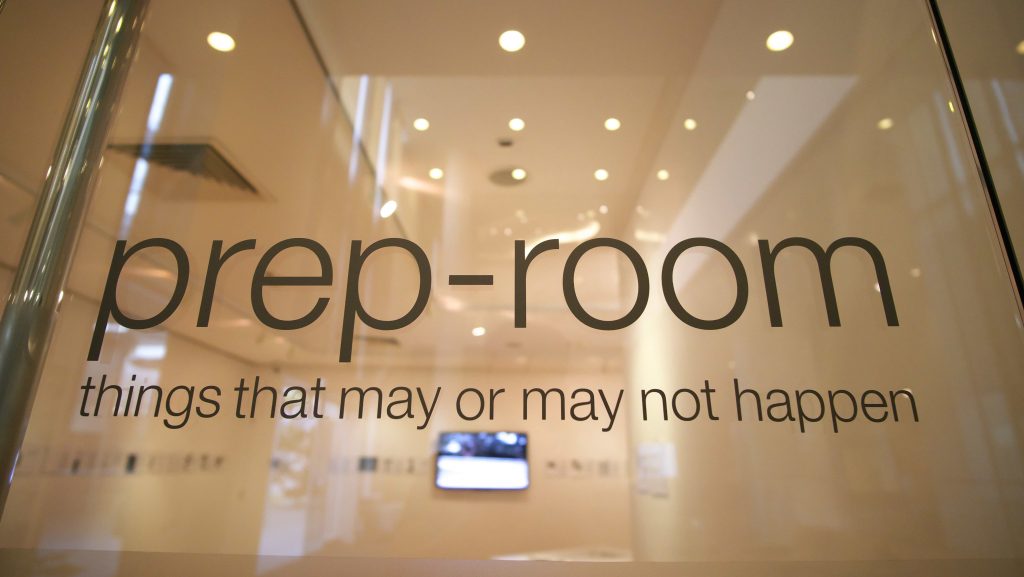
According to NUS Museum:
The prep-room is a fluid, temporal and dialogic space, conceived as a site for the exploration of curatorial methods and research. Materials and traces accumulated over time will not necessarily amount to an eventual exhibition at the NUS Museum; the aim is to attend to a mode of research which is not immediately tied to an end goal in mind. Research, therefore, entails a certain sense of unknowing, of chance discoveries pursued in earnest, but also a constant push towards the possibilities of failure. To that end, the prep-room is a space where things may or may not happen.
